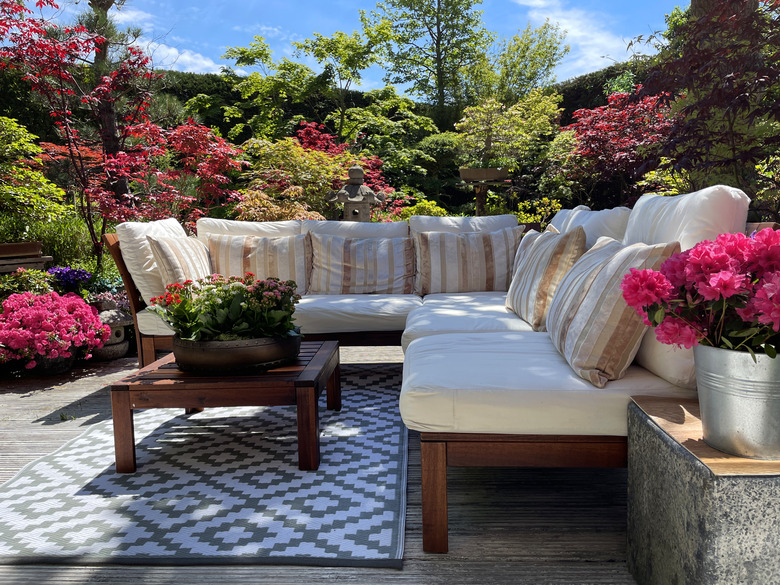How To Get Rid Of Mold And Mildew On Outdoor Rugs
We may receive a commission on purchases made from links.
Mold on an outdoor rug is unsightly and can damage a rug. That's why cleaning outdoor carpet is a necessary household chore. Luckily, it's not hard, especially if you do it before the mold or mildew has a chance to grow and spread.
Why Outdoor Rugs Get Mold
Why Outdoor Rugs Get Mold
Mold grows in warm, damp areas, especially those where there's not a lot of sunlight or air movement. So rugs on shady patios or decks are more likely to have mildew than those in sunny areas.
Mold on outdoor rugs can cause the carpet to smell musty and can leave stains. If the mold is left to grow, it can cause the rug to rot. Mold may also cause health problems, such as respiratory issues in children.
How to Remove Mold From an Outdoor Rug With a Vacuum
How to Remove Mold From an Outdoor Rug With a Vacuum
- Brush any loose mold off the surface of the rug with a broom. Brush the bottom of the rug and the outdoor carpet pad too.
- Vacuum the rug repeatedly to remove mold spores below the surface. Then, vacuum the outdoor carpet pad and the underside of the rug. Once you've finished vacuuming, put the disposable vacuum bag in an outdoor trash can. If your vacuum doesn't use a bag, empty the canister carefully so that you don't spread the mold spores.
- If stains remain, sponge the rug surface with soapy suds using dish soap or detergent. Wipe the rug with a clean, damp cloth and dry it in the sun.
How to Remove Mold From an Outdoor Rug With Peroxide
How to Remove Mold From an Outdoor Rug With Peroxide
- Mix 1 part 3 percent hydrogen peroxide with 5 parts water.
- Use a paintbrush, mop, or rag to apply the solution to the moldy parts of the rug.
- Scrub away the mildew.
- Blot the rug dry or dry it in the sun
How to Remove Mold From an Outdoor Rug With Bleach
How to Remove Mold From an Outdoor Rug With Bleach
- Mix 2 tablespoons of liquid chlorine bleach with a quart of water.
- Apply the bleach mixture to the moldy areas of the outdoor rug with a sponge or mop. Let the bleach soak in for about 15 minutes.
- Rinse the rug with a garden hose to remove the bleach.
- Dry the rug in the sun.
How to Prevent Mold on an Outdoor Rug
How to Prevent Mold on an Outdoor Rug
The best way to prevent mold from developing on an outdoor rug is to keep the rug dry. If possible, dry outdoor rugs after rainfall by moving them into the sunlight or placing them over a deck railing. Flip the rug to expose both the surface and the underside to the sun.
If your outdoor rug is normally placed in an area where it receives little sunlight, move it to a sunny area occasionally so that it can dry out completely.
Select a rug that's specifically designed for outdoor or indoor/outdoor use. Outdoor carpeting is usually made from polypropylene and other synthetics. Look for an outdoor rug that is resistant to water and rot. You may also want a rug that's been treated to withstand ultraviolet rays.
Tip
Before cleaning outdoor carpet with any cleaning solution, test the mixture on an inconspicuous spot to ensure it won't damage the rug.
